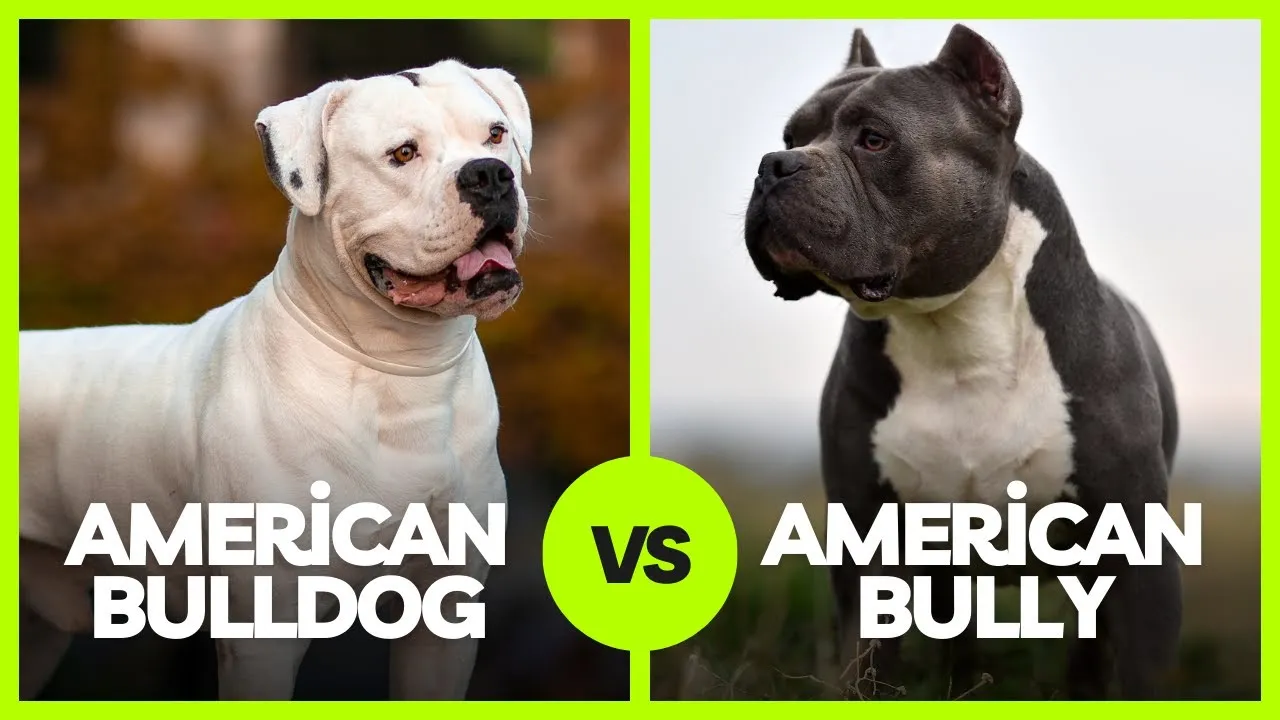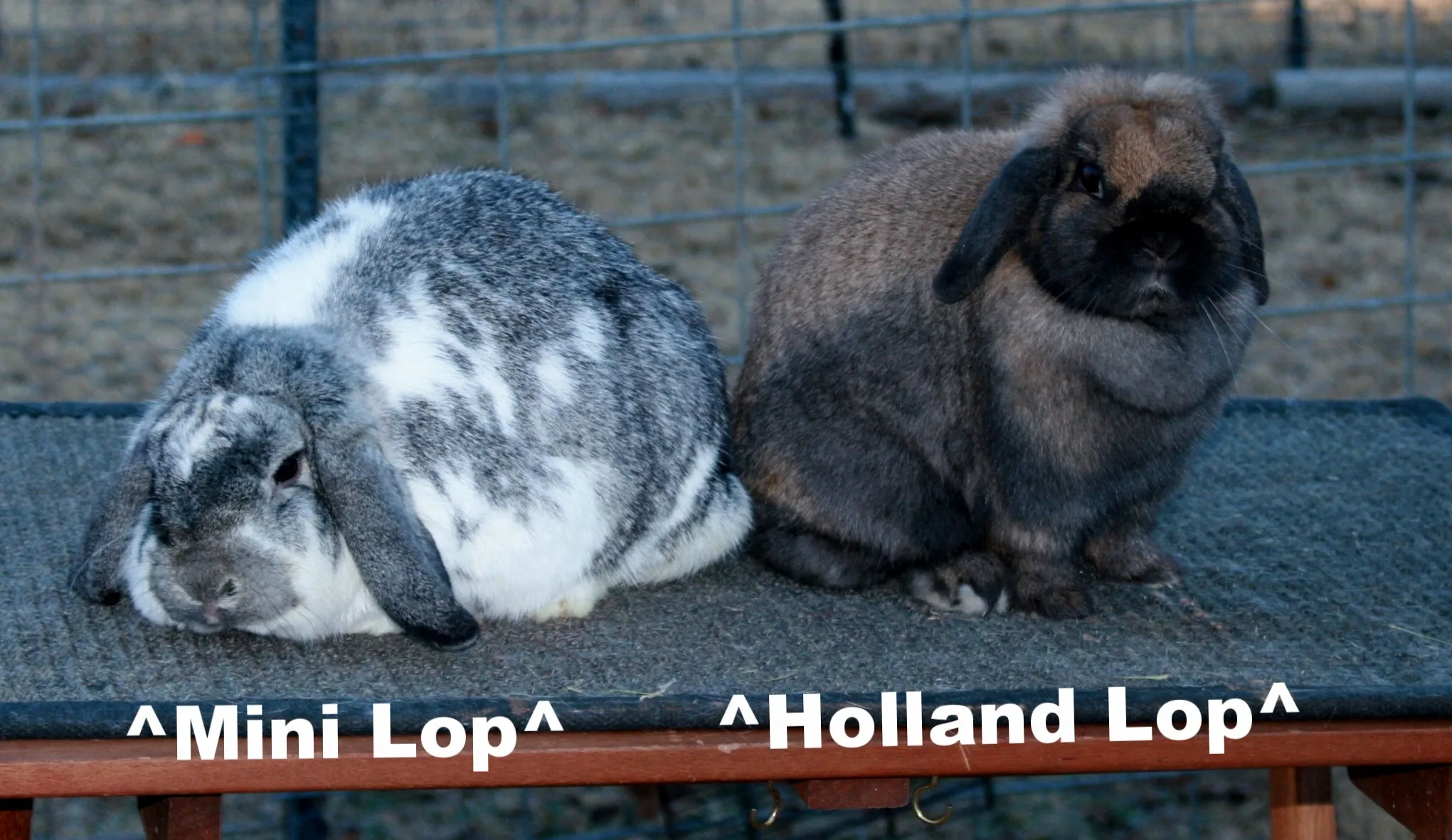American bully versus American bulldog compete with their muscular frames and stocky appearances; the American Bulldog and American Bully may appear nearly identical. However, underneath the tough buildings is an area of difference between the two species.

While the American Bulldog and American Bully have very different temperaments and health, their main difference is their history and pedigree.
However, we are excited to share all the minutiae that distinguish these breeds, bringing to light the special qualities each breed bears.
American Bully Versus American Bulldog: What Are The Differences?
The American bully breed was born by crossing numerous breeds, including the American pit bull terrier, American Staffordshire terrier, and others. The idea was to create a devoted and loving companion who wished to please its guardian. This one was spot on.
The other breed, the American bulldog, is as old as they come, which we will examine shortly. I suppose they could have come up with more unique names for each, but that’s already been decided.
Both types are robust and stocky, and they can appear intimidating at first. Then you might consider taking one home. Both have a thick bone structure and are hefty. Consider defensive linemen in football.
Because of their appearance, they are frequently mistaken for pitbull terriers, which are outlawed in various nations and states in the United States. (This is known as BSL or breed-specific legislation. We firmly believe that no breed should be banned.)
American Bully vs. American Bulldog: Exercise Requirements

This bully breed is athletic, with exceptional strength and endurance. To alleviate their energy, they should take a long walk or two shorter walks per day, as well as play puzzle games indoors to exercise their thoughts. Because they have a high risk of developing severe Brachycephaly symptoms, it is critical to keep them cool.
They’re a well-balanced, high-energy breed (remember they were farm workers) who require regular exercise. This medium-sized dog is surprisingly agile and enjoys agility and obedience events.
Long daily walks, along with fun in the backyard or inside, should be plenty. Always keep an eye out for signs of Brachycephaly in American bulldog breeds, and keep them from overheating.
The Cost of Ownership
If you buy an American bully or an American bulldog, you will pay much more than if you adopt. We favour adoption above breeding for any breed.
However, the costs vary based on the breeder’s location, the dog’s ancestry, if it is a show dog, and many other criteria. These are simply estimations.
American bulldog: $1,500–$3,500.
American bully: $2,000–$10,000+
American Bully Versus American Bulldog Health Issues
The American Bully
- Dental disease
- Hip and elbow dysplasia (joint conditions)
- Heart disease
- Parasites (worms, mites, fleas, etc.). Keep up with your vaccines.
- Mange
- Obesity
- Skin Issues (To prevent infection, keep skin folds and wrinkles clean and dry.)
- Allergies
- Eye problems
- Viral and bacterial infections (Parvovirus, Distemper, Rabies)
- Brachycephalic obstructive airway syndrome, or BOAS, (may be fatal) Brachycephaly
- Spay or neuter (very important). This can help prevent certain types of cancer while not contributing to the current dog overpopulation.)
American Bulldog
- Spay or neuter
- Dental issues
- Obesity
- Parasites
- Hip and elbow dysplasia
- Nerve disease
- Thyroid issues
- Eye issues
- Skin issues
- Mange
- Bladder or kidney stones
- Infections – (Viral and bacterial)
- Brachycephalic obstructive airway syndrome or BOAS – (Can be fatal)
American Bully vs. American Bulldog: Appearance

The most major distinction between the American Bully and American Bulldog breeds is their size. American Bulldogs are often larger and heavier than American Bullies. American Bullies are a medium-sized breed that usually stands between 13 and 20 inches tall.
They have a robust and stocky physique, broad shoulders, and a large chest. Their heads are usually massive, with a short, broad muzzle. American Bullies have short coats available in a variety of colours.
American Bulldogs are larger than American Bullies, standing 20 to 25 inches tall. They have a robust and athletic body, with a large head and powerful jaws. Their coat is short and can come in a variety of hues, but white
A More In-depth Look at the American Bully
The American Bully is a relatively young breed, having emerged in the United States in the 1980s. It was developed by crossing numerous breeds such as American Staffordshire Terriers, American Pit Bull Terriers, American Bulldogs, English Bulldogs, and Staffordshire Bull Terriers.
American Bulldogs are recognized for their amiable and extroverted nature. They are friendly with children and make ideal family pets. They are very easily trainable and frequently employed as therapy dogs.
Unlike the American Bulldog, the American Bully is not recognized as a breed by the American Kennel Club.
History of American Bully Versus American Bulldog
American Bully
This American Bully dog breed originated in the United States in the 1990s. That is correct; it was only that long ago. They were created to be the best animal friends possible, combining the best features of the American pit bull terrier, Staffordshire Bull terrier, and American Staffordshire terrier.
(Some breeding lines incorporated other breeds.) It originated in Virginia and Los Angeles (CA), in the United States. The American Bully breed spread throughout the country and beyond, reaching Europe and Asia.
American Bulldog
This breed, which is descended from the English bulldog, was introduced to America by immigrants in the 1800s. The American bulldog was a farm dog that guarded stock and property.
Its unusual ability to trap feral pigs made it popular, particularly in the southern regions. They were initially known as the “White English Southern bulldog.”
Conclusion
The conflict between the American Bully and the American Bulldog can be tense, but it ultimately comes down to personal preference and lifestyle. Whether it’s the Bully’s vibrant charm or the Bulldog’s gruff determination, both breeds approach life with unique characteristics that set them apart.
Search, discover, and choose the best match for you. When looking for a four-legged friend, nothing beats finding a dog who fits your personality and lifestyle.







